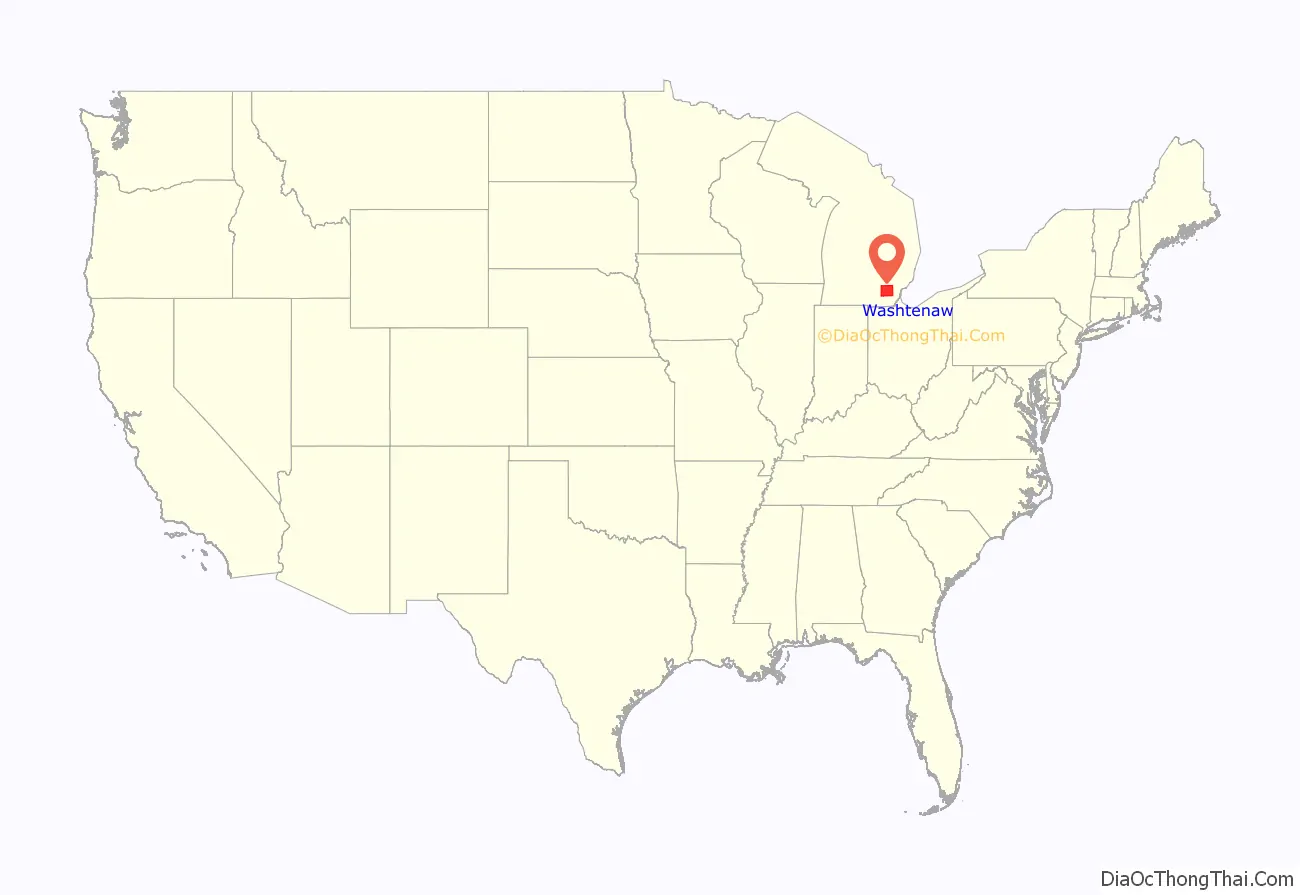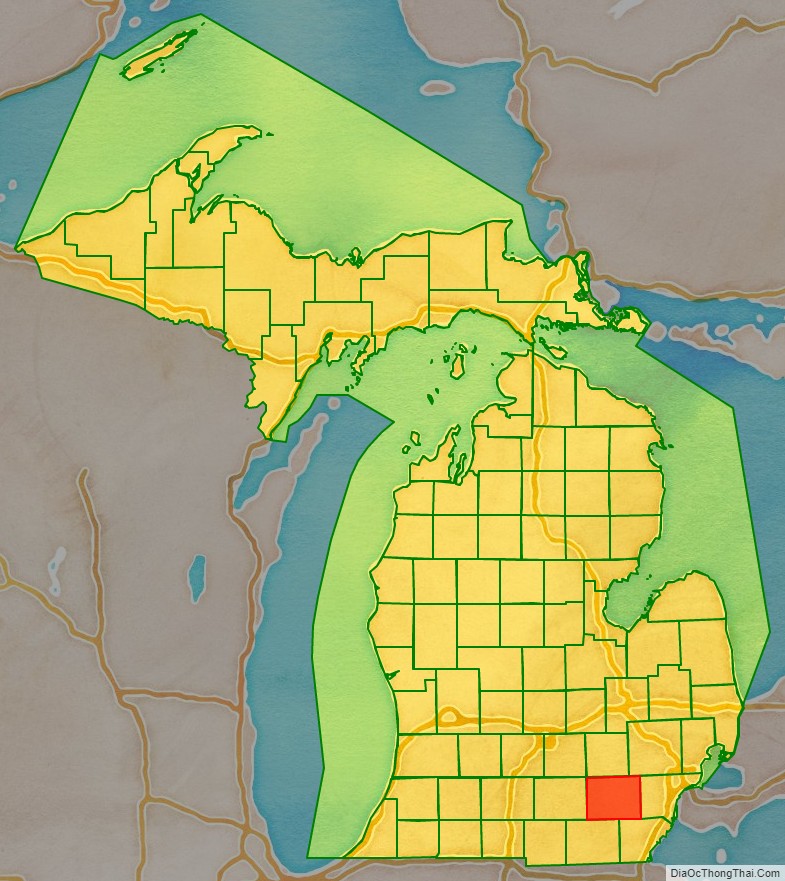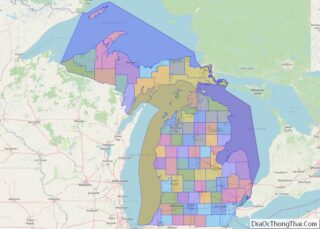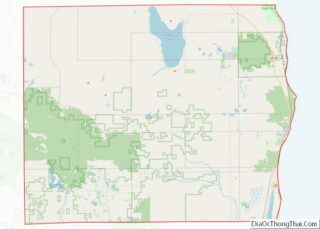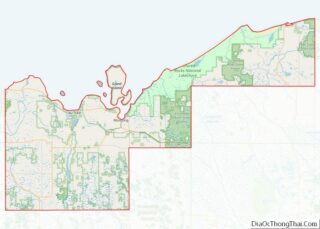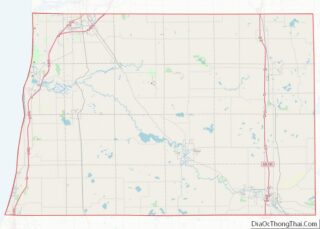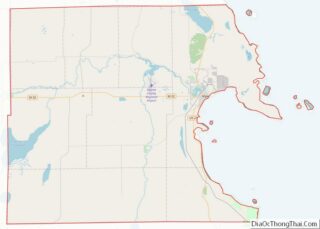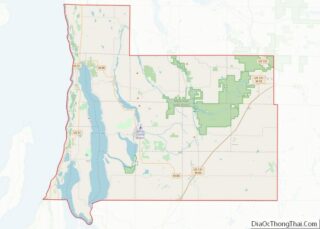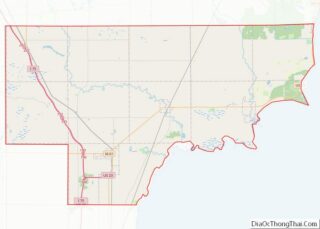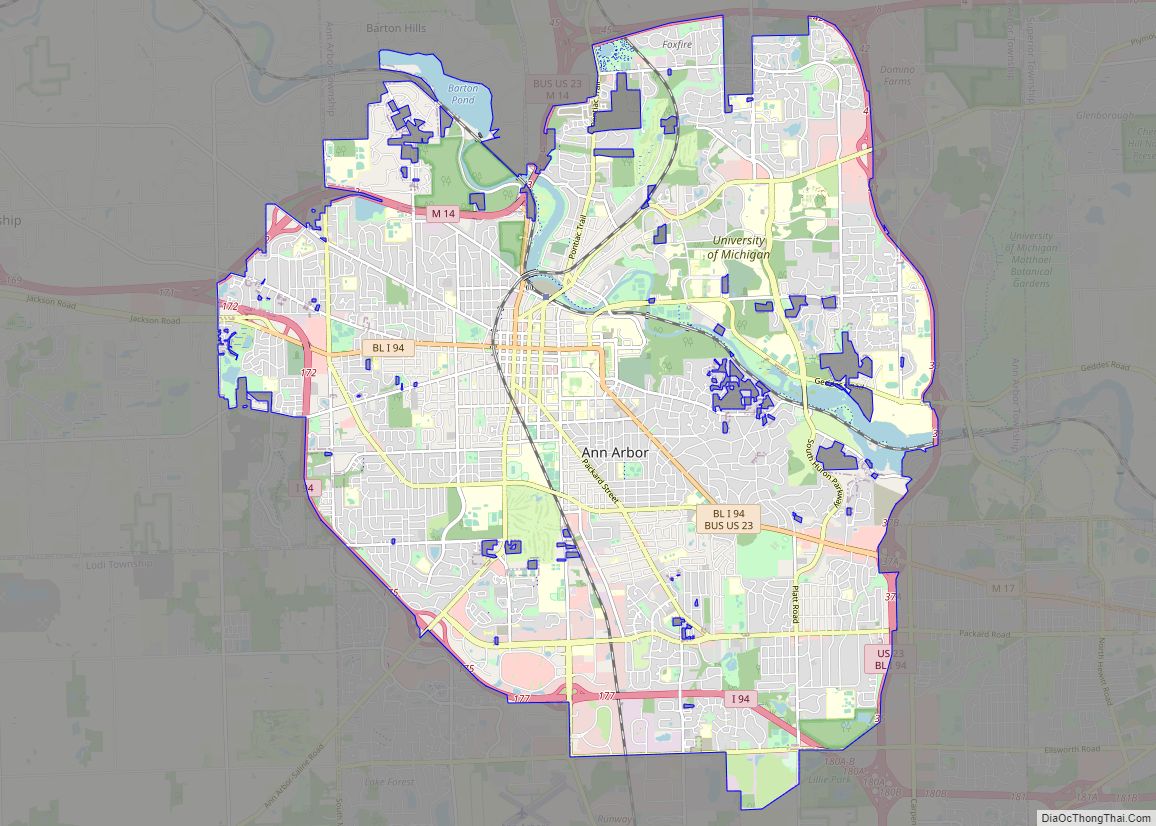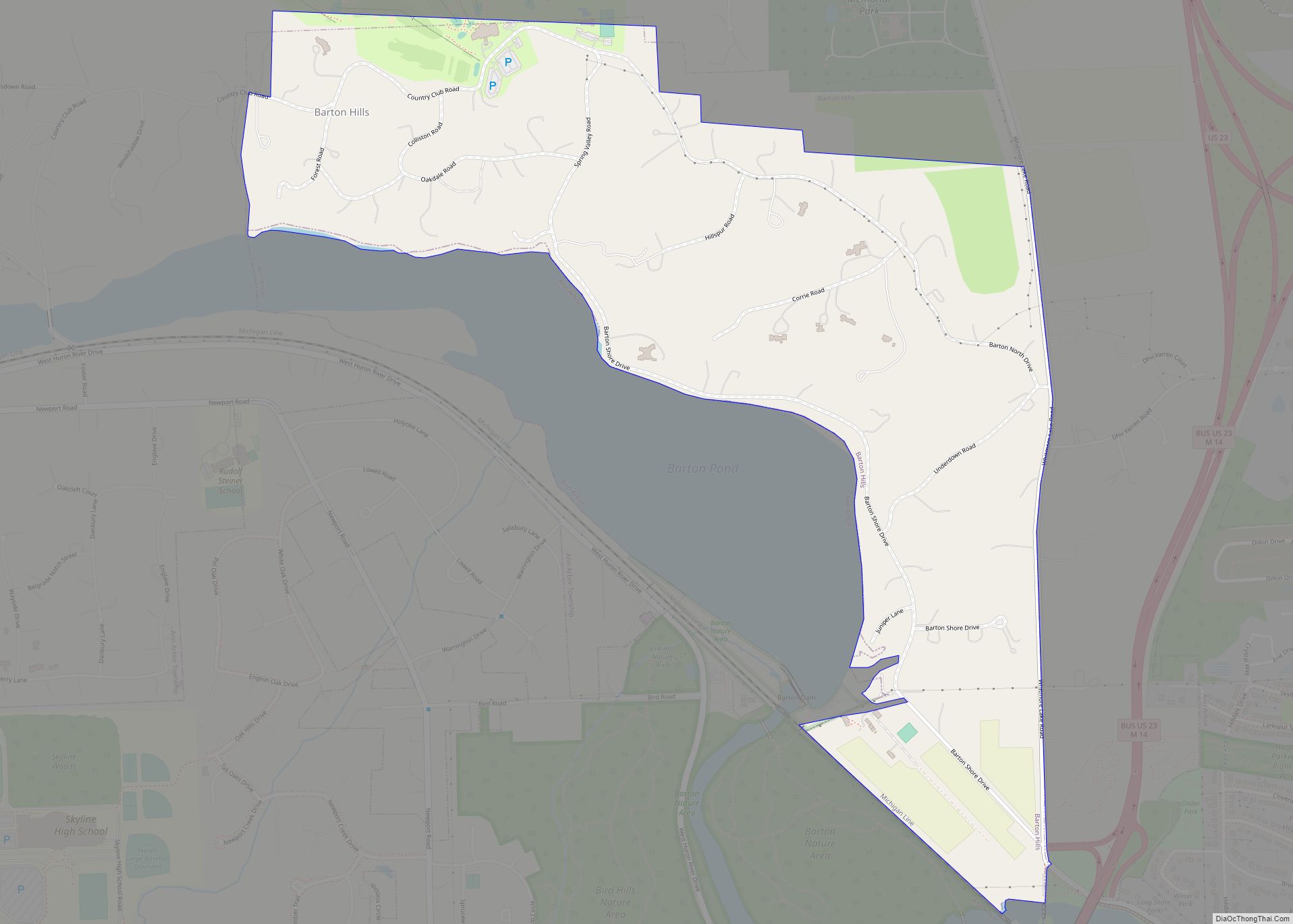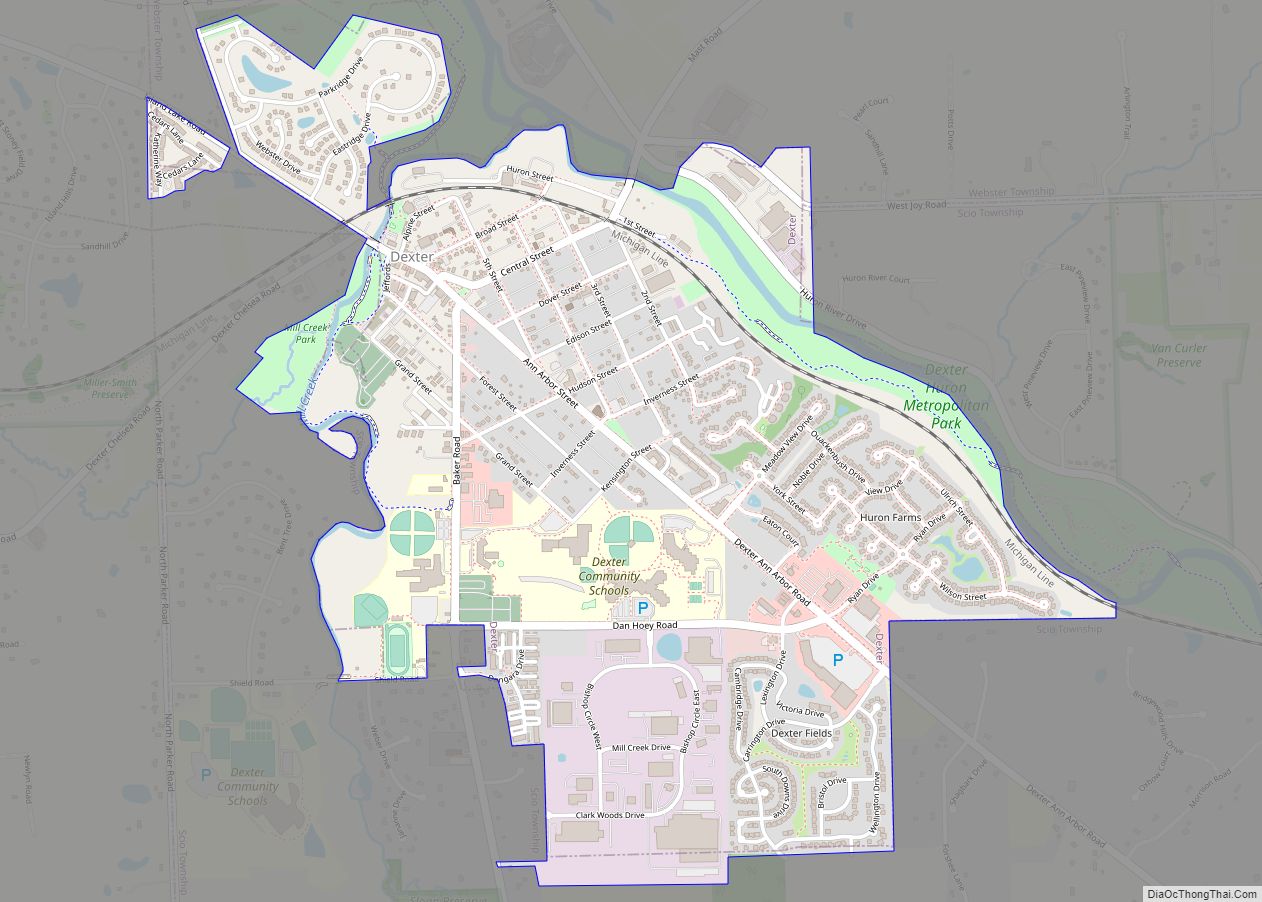Washtenaw County (/ˈwɔːʃtənɔː/ WASH-tə-naw) is a county located in the U.S. state of Michigan. At the 2020 census, the population was 372,258. The county seat is Ann Arbor. The county was authorized by legislation in 1822 and organized as a county in 1826. Washtenaw County comprises the Ann Arbor Metropolitan Statistical Area. The county is home to the University of Michigan, Eastern Michigan University, Washtenaw Community College, and Concordia University Ann Arbor.
| Name: | Washtenaw County |
|---|---|
| FIPS code: | 26-161 |
| State: | Michigan |
| Founded: | 1822 (created) 1826 (organized) |
| Named for: | O-wash-ta-nong (“far away water”), Ojibwe name for the Grand River |
| Seat: | Ann Arbor |
| Largest city: | Ann Arbor |
| Total Area: | 722 sq mi (1,870 km²) |
| Land Area: | 706 sq mi (1,830 km²) |
| Total Population: | 372,258 |
| Population Density: | 527/sq mi (203/km²) |
| Time zone: | UTC−5 (Eastern) |
| Summer Time Zone (DST): | UTC−4 (EDT) |
Washtenaw County location map. Where is Washtenaw County?
History
First Nations’ Territories
The first peoples occupying the central portion of what is now Michigan included: “the Pottawattamies, the Chippewas, the Ottawas, the Wyandottes and the Hurons”. First nations whose territories included land within the Washtenaw County boundaries are shown to have included: Myaamia (Miami), Bodéwadmiké (Potawatomi), Anishinabewaki ᐊᓂᔑᓈᐯᐗᑭ, Peoria, Meškwahki·aša·hina (Fox), and the Mississauga nation.
Etymology of Washtenaw
In the Ojibwe language, “Wash-ten-ong” or “Owashtanong” literally translates as “far away waters”, and was then used by the Ojibwe as the name for the Grand River due to its great length. At the time of the official naming of the county in 1822, the headwaters of the Grand River fell within the original boundaries of Washtenaw County, which encompassed a much larger area than the present county.
Early colonization
The earliest histories mention French trappers and traders conducting trade in the area at the Potawatomi Trail and Pontiac Trail crossings of the Huron River, and later English then American settlers. The first successful settlement was established at the present site of Ypsilanti about 1809 by French traders.
In 1822, the Legislative Council of Michigan Territory government defined the name and boundaries of the county, but attached it to Wayne County for revenue, taxation and judicial affairs. Four years after the first platting out of the county, Washtenaw was established as a separate self-administered county by an act of the Michigan Territorial Legislature, in 1826. It was attached for administrative purposes to Wayne County until {before 1829} when county government was seated. Ingham and other counties were formed from portions of territorial Washtenaw County.
Swamps were drained and farms were tiled to lower the water table. The swamp northwest of the I-94 and US-23 intersection, and areas within Waterloo Recreation Area still appear as they did to early settlers. As productive farms became established, the local deer herds grew. In the 1820s and 1830s, the events surrounding the independence of Greece from Turkey inspired construction of Greek Revival buildings, and the names of townships, towns, and children.
The “frostbitten constitutional convention” was held at Ann Arbor, the county seat, in 1835. Statehood was delayed because Michigan claimed the Toledo Strip, which was also claimed by Ohio. Following resolution of the Toledo War (1835–1836), in which Michigan Territory ceded its claim to Toledo in exchange for most of the Upper Peninsula (from the Porcupine Mountains eastward), Ohio withdrew its objection and Michigan became a state on January 26, 1837.
The constitutional convention also decided to move the capital from Detroit to a point further away from the Canadian border. After considering many existing communities, the delegates decided to build an entirely new capital city, which became Lansing. The University of Michigan, founded at Detroit in 1817, was moved to Ann Arbor in 1839 as a consolation for the city not being named the new state capital, as it had sought. The University subsequently became and remains Washtenaw County’s largest employer.
In 1849, the Michigan State Normal School (now Eastern Michigan University) was established in Washtenaw’s oldest settlement, Ypsilanti. It was elevated to collegiate status c. 1891 as Michigan State Normal College. The name was changed in 1956 to Eastern Michigan College, which was elevated to university status in 1959.
Washtenaw County Road Map
Geography
According to the U.S. Census Bureau, the county has a total area of 722 square miles (1,870 km), of which 706 square miles (1,830 km) is land and 16 square miles (41 km) (2.3%) is water.
Adjacent counties
- Livingston County (north)
- Oakland County (northeast)
- Wayne County (east)
- Monroe County (southeast)
- Lenawee County (southwest)
- Jackson County (west)
- Ingham County (northwest)
Major highways
- I-94
- BL I-94
- US 12 (Michigan Avenue, Chicago Road)
- Bus. US 12
- US 23
- Bus. US 23
- M-14
- M-17
- M-52
- M-153 (Ford Road)
